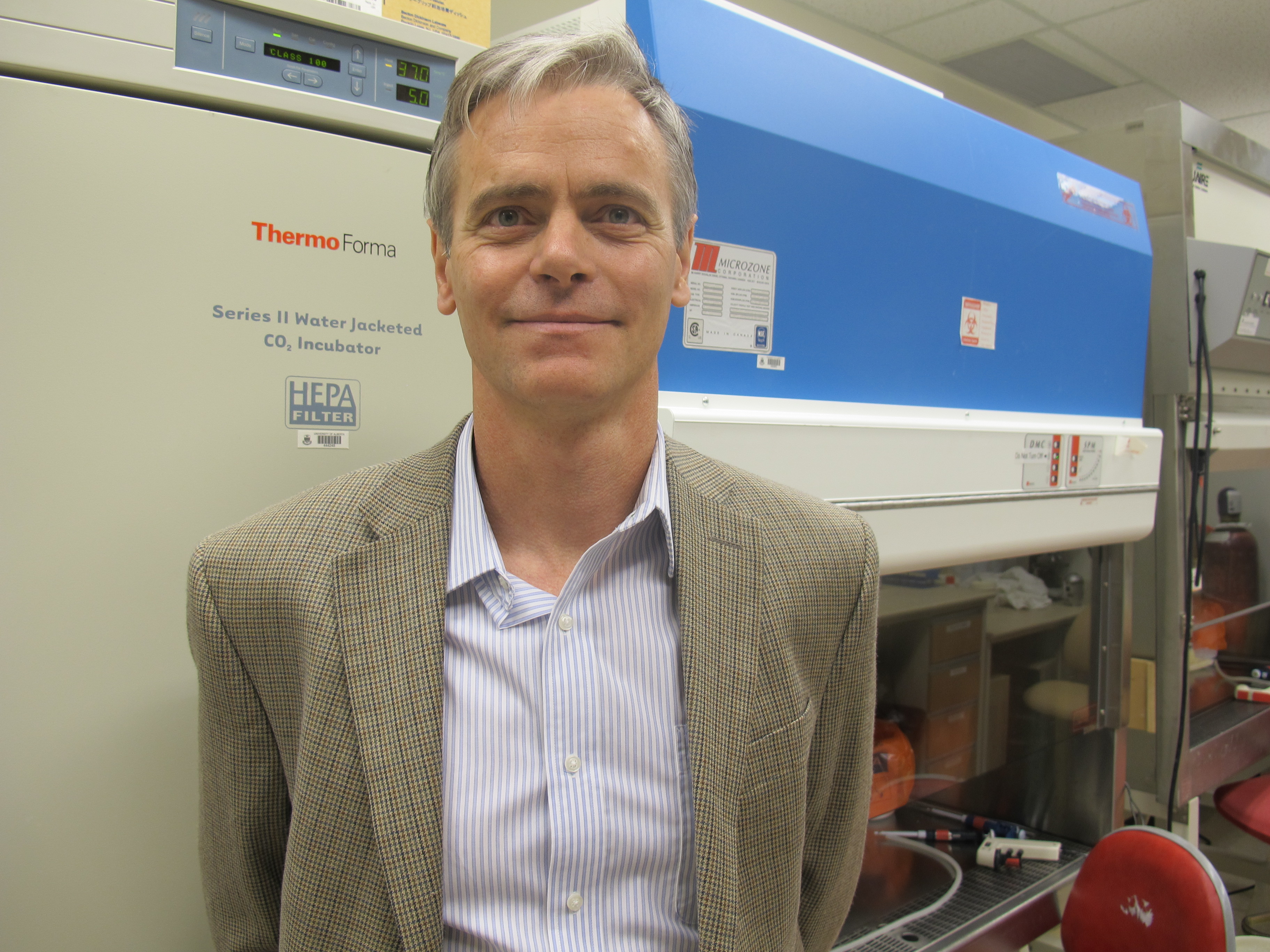
Researchers with the Faculty of Medicine & Dentistry have discovered a new drug target, developed a new drug, and identified a new way to design drugs, all of which could be a lethal combination in the battle against viruses.
The findings by Che Colpitts, Luis Schang and their team were recently published in the peer-reviewed journal, Journal of Virology. Their findings are a continuation of the research started by Mim St. Vincent, of the Université de Saint-Boniface in Manitoba. Her research was previously published in the Proceedings of the National Academy of Sciences (PNAS).
In order for a virus to infect a cell, the virus has to change from a sphere shape to an hour glass shape. The new drug developed by Schang and his team prevented viruses from changing their shapes and infecting cells.
"The compounds or drugs we developed insert themselves inside a certain part of the virus and then the virus no longer has enough energy to change its shape and fuse to cells. When a virus fuses to a cell, this allows the virus to enter the cell and infect it," explains Schang. "So our discovery prevents the virus from infecting new cells, although it does not stop the virus from killing already infected cells"
The research team has conducted their work in Petri dishes in a lab. They are currently continuing their research by testing this new drug on lab models.
The discovery is protected by patent applications in multiple countries. Schang says his team is currently moving the discovery to pre-clinical development with Pro-Physis, Inc, a start up biotechnology company being spun off from the University of Alberta in collaboration with TEC Edmonton.
"In terms of drug discovery, this new development is key," he says.
"No one had considered looking at this area - at lipids - as drug targets before. And no one had considered biophysics important for anti-viral drug design and development. The target is new and the way we designed the drug is totally different and new."
Schang is a researcher in the Department of Biochemistry and the Department of Medical Microbiology and Immunology. He is also a member of the Li Ka Shing Institute of Virology. He worked closely with Alexey Ustinov and Vladimir Korshun in Russia on the discovery.
The Burroughs Wellcome Fund and the Canadian Institutes of Health Research (CIHR) funded the research. TEC Edmonton, CIHR, Alberta Innovates-Health Solutions, investors, and Pro-Physis Inc. have supported the early intellectual protection and drug development.